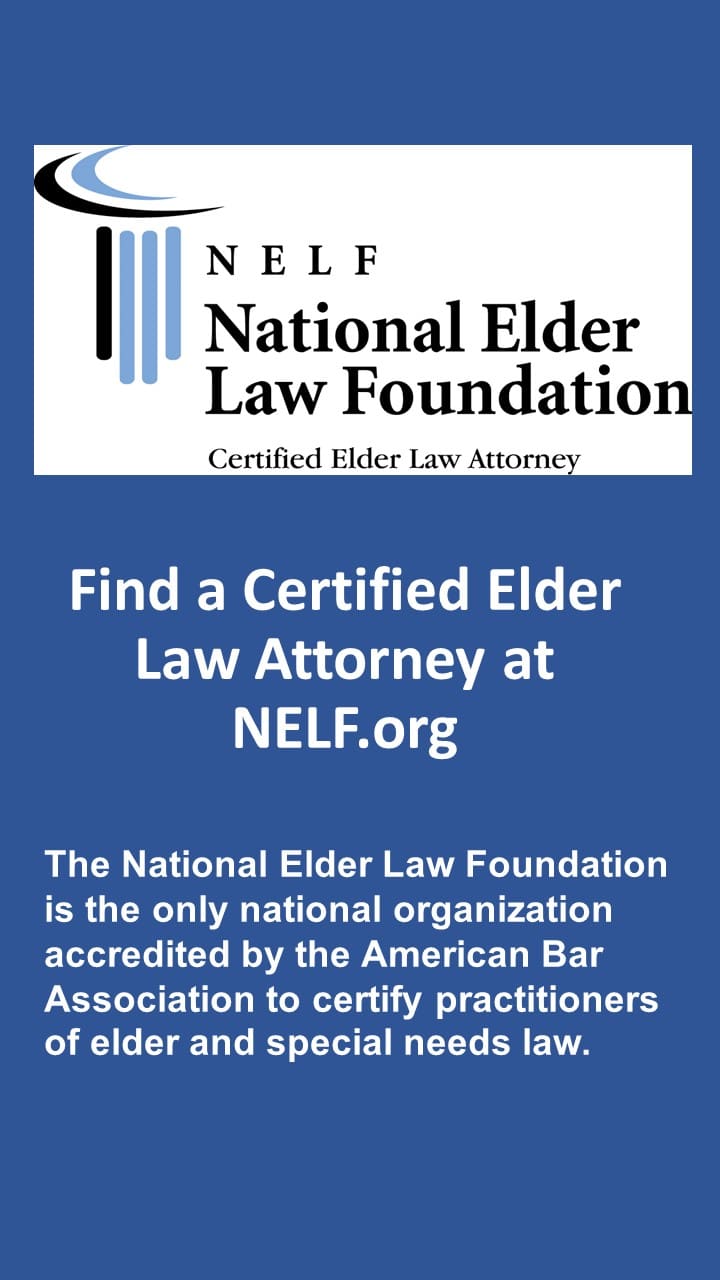Last year we reported that Talevski v. Health and Hospital Corporation of Marion County (HHC) was headed to the Supreme Court. On June 8, 2023, the U.S. Supreme Court issued its opinion, affirming the Seventh Circuit, and held that the Federal Nursing Home Reform Act (FNHRA) is enforceable under 42 U.S.C. § 1983.
Justice Jackson delivered the opinion. She was joined by Chief Justice Roberts and Justices Sotomayor, Kagan, Kavanaugh and Barrett. Justices Gorsuch and Barrett filed concurring opinions. Justices Thomas and Alito each filed a dissenting opinion.
Background
In 2016, after George Talevski’s dementia progressed to the point where family could no longer care for him at home, he was placed at Valparaiso Care and Rehabilitation (VCR), a nursing home. At the time of admission, Talevski could talk, feed himself, walk, socialize and recognize his family. Later in 2016, his condition suddenly declined, leaving him unable to speak English. VCR claimed his decline was the result of the dementia, but Talevski’s daughter suspected otherwise and discovered he was being chemically restrained with six powerful psychotropic drugs. Using an outside neurologist, the medications were tapered down and Talevki improved, regaining the ability to feed himself.
Toward the end of 2016, VCR claimed Talevski was harassing female residents and staff and sent him to a facility about 90 minutes away. He was readmitted to VCR after the first two visits to the psychiatric hospital, but the third time, VCR tried to force a permanent transfer to a facility in Indianapolis. VCR did this without first notifying Talevski or his family.
Talevski filed a complaint with the Department and an administrative law judge nullified VCR’s attempted transfer. VCR ignored the judge’s decision and refused readmission. Talevski complained again to the Department. Subsequently, the company that managed VCR, American Senior Communities LLC, contacted Talevski’s wife to discuss the possibility of returning to VCR. However, by that time, he was placed elsewhere and had acclimated to the new facility; fearing retaliation, the family decided to leave Talevski at the new facility even though it required a three hour round trip to visit.
In 2019, Talevski sued VCR and related entities, including Marion County, Indiana. The County owned Health and Hospital Corporation, which in turn owned VCR. Since the suit was against a government entity, the suit included a Section 1983 claim (42 U.S.C. § 1983). Section 1983 was passed during reconstruction and signed into law by President Ulysses S. Grant in 1871. It provides that:
“[e]very person who, under color of any statute, ordinance, regulation, custom, or usage, of any State or Territory or the District of Columbia, subjects, or causes to be subjected, any citizen of the United States or other person within the jurisdiction thereof to the deprivation of any rights, privileges, or immunities secured by the Constitution and laws, shall be liable to the party injured in an action at law, suit in equity, or other proper proceeding for redress.”
The claim was simple. Mr. Taleviski has rights under the FNHRA and, under color of law, a government entity deprived him of his rights. Specifically, the “right to be free from . . . any physical or chemical restraints imposed for purposes of discipline or convenience and not required to treat the resident’s medical symptoms.” §1396r(c)(1)(A)(ii) and “[t]ransfer and discharge rights,” §1396r(c)(2)(A).
Lower Court Decisions
The Defendants filed a motion to dismiss in the trial court, arguing Talevski could not use Section 1983 to enforce the FNHRA. The District Court granted the Defendant’s motion. The case was appealed to the Seventh Circuit Court of Appeals where it was reversed. The Seventh Circuit concluded that under Supreme Court precedent, the relevant FNHRA provisions “unambiguously confer individually enforceable rights on nursing-home residents,” making those
rights presumptively enforceable via §1983. 6 F. 4th 713, 720 (2021). The Court of Appeals held further that the presumption had not been rebutted here, because nothing in the FNHRA indicated congressional intent to foreclose
§1983 enforcement of these rights. Id., at 720–721. The defendants filed a petition for certiorari, which was granted.
The Majority Opinion
The defendants argued Section 1983 cannot be used to enforce the FNHRA because Congress used its spending power to pass that legislation. They used the logic adopted by Justices Thomas and Alito in their dissents, that the FNHRA creates no rights. They argued it is simply a contract between the federal government and participating States. They further argued that Talevski was simply a third party beneficiary of that contract and, as such, any rights he had were not “secured by laws.” Justice Jackson noted that defendants were asking the Court to narrowly read “laws” to mean only “civil rights or equal protection laws.” See Opinion, page 5. The Court rejected that invitation, finding that a straightforward reading of the Statute’s plain language was required. Congress did not attach any modifiers to the phrase “and laws” when it enacted Section 1983.
Citing Maine v. Thiboutot, 448 U. S. 1 (1980), Justice Jackson wrote “we have crafted a test for determining whether a particular federal law actually secures rights for §1983 purposes.” See Gonzaga Univ. v. Doe, 536 U. S. 273 (2002). Initially, though the Court held that “laws” means “laws.” The Court “refused to read §1983’s “plain language” to mean anything other than what it says.” See Opinion, p. 7. The Court refused to hold that laws enacted under the Spending Power are not “laws” within the meaning of Section 1983. The defendants made a syllogistic argument that parties suing to enforce obligations between the federal government and States are mere third-party beneficiaries; under contract common law in 1871, third-party beneficiaries were barred from suing to enforce contract obligations; therefore, Talevski, as a third-party beneficiary of a contract, cannot use Section 1983 to enforce FNHRA. The Court quickly rejected that argument citing two well-established principles. First, prior Section 1983 cases reference firmly rooted common law priciples and the Court implement’s Congress’s choices rather than remaking them. The Court found the defendant’s claim that third-party beneficiaries cannot enforce contract rights is, at least, contestable. An Amicus brief filed for Contract Law Professors, noted that a majority of American jurisdictions permitted third-party beneficiaries to enforce contract rights in the 1870s when Section 1983 was enacted. Second, Section 1983 actions are tort claims. Thus, the Court rejected the defendant’s argument and reaffirmed that “laws” in Section 1983 means what it says. See Opinion, p. 10.
Next the Court examined the FNHRA, finding that it can create enforceable rights. But does it? Opinion, p. 11. Citing Gonzaga, the Court said ” our precedent sets a demanding bar: Statutory provisions must unambiguously confer individual federal rights,” before Section 1983 can be used to enforce them.
Although FNHRA largely lays out the requirements for Medicaid-participant States and nursing home, 42 U.S.C. § 1396r(c) addresses requirements relating to residents’ rights. The provisions relevant to this case (1) requires nursing facilities to “protect and promote” residents’ “right to be free from . . . any physical or chemical restraints imposed for purposes of discipline or convenience and not required to treat the resident’s medical symptoms” and (2) tells nursing facilities that they “must not transfer or discharge [a] resident” unless certain enumerated preconditions, including advance notice of such a transfer or discharge, are met. Opinion, p. 12. Citing Wisconsin Dept. of Health and Family Servs. v. Blumer, 534 U. S. 473, 495 (2002), as authority for “cooperative federalism (the federal and State government’s working together), the Court noted that Medicaid State Plans must include enforcement procedures which sanction noncompliant facilities. In most spending clause legislation, the remedy for noncompliance is termination of federal funding, not an individual cause of action to enforce the statute.
With that as background, the Court said Gonzaga sets forth our established method for ascertaining unambiguous conferral of enforceable rights. Courts must employ traditional tools of statutory construction to assess whether Congress has “unambiguously conferred” “individual rights upon a class of beneficiaries” to which the plaintiff belongs. It must be determined that Congress intended to create a federal right for an identified class, not merely a zone of interest. The Gonzaga test is satisfied where the provision in question is “‘phrased in terms of the persons benefited’” and contains “rights-creating,” individual-centric language with an “‘unmistakable focus on the benefited class.’” Opinion, p. 14. Conversly, the Court has rejected §1983 enforceability where the statutory provision “contain[ed] no rights-creating language”; had “an aggregate, not individual, focus”; and “serve[d] primarily to direct the [Federal Government’s] distribution of public funds.” Opinion, p. 14. The Court described this test as a significant hurdle and, if surmounted, the rights secured are enforceable under Section 1983.
Finding FNHRA enforceable, the Court held that the statutory language was indicative of an individual rights-creating focus. In other words, the rights enumerated in the NHRA are not mere suggestions; they are rights created by Congress. The unnecessary restraints provision included exceptions requiring examination of the resident’s symptoms, the residents interaction with other residents, and only upon the order of a physician that specifies the duration and circumstances under which restraints are allowed. The predischarge-notice provisions also look at the individual’s circumstances, stating the facility must not transfer or discharge the resident unless his or her circumstances fall within one of six exceptions. Those exceptions turn on the “resident’s health,” the “resident’s urgent medical needs,” or the existence of threats to the safety or health of other individuals in the nursing home. Opinion, p. 15-16. The Court found it immaterial that the rights were secured in the context of providing directions to actors that might threaten those rights. The Court found this language distinguished the prsent case from Gonzaga where the provisions under examination lacked rights-creating language.
Even where unambiguous rights are created, Section 1983 cannot be used to enforce those rights if Congress intended otherwise. Congress could express that intent either by specifically providing that the law could not be enforced under Section 1983, or by creating a remedial scheme intended to be the exclusive avenue for asserting claims (implicit-preclusion). Implicit-preclusion requires a finding that Section 1983 enforcement is incompatibility between enforcement under §1983 and the enforcement scheme that Congress has enacted. Opinion, p. 18. The Court found there was no express or implicit preclusion in FNHRA. Defendant’s difficulty with the preclusion argument is “that implicit preclusion, in this context, requires something in the statute that shows that permitting § 1983 to operate would “thwar[t] Congress’ intent” in crafting the FNHRA. Fitzgerald, 555 U. S., at 253. We see nothing in the FNHRA that even hints at Congress’s intent in this regard; if anything, the language of the Act confirms otherwise, for it plainly states that “[t]he remedies provided under” its enforcement-process subsection are “in addition to those otherwise available under State or Federal law and shall not be construed as limiting such other remedies.” § 1396r(h)(8).” Opinion, p. 22. The Court said it would not rewrite §1396r(h)(8) in lieu of rewriting Section 1983.
The Opinion ends by recalling defendant’s remark during oral argument that the right question is what rights are secured by law under Section 1983. The answer is that it is available to enforce every right Congress validly and unambiguously creates. Opinion, p. 23.
Justice Gorsuch, Concurring
Writing separately, Justice Gorsuch agreed that the FNHRA is a law within the meaning of Section 1983. Although defendants failed to develop the issue fully, he questioned whether legal rights in spending legislation are “secured” as against States and whether they may be so secured consistent with the anti-commandeering principle. National Federation of Independent Business v. Sebelius, 567 U. S. 519, 575–578 (2012); Murphy v. National Collegiate Athletic Assn., 584 U. S. ___, ___– ___ (2018).
Justice Barrett, Concurring
Writing separately, Justice Barrett began with the following statement: “Today’s opinion makes three important points. First, Maine v. Thiboutot remains good law. 448 U. S. 1 (1980). Second, Gonzaga University v. Doe sets the standard for determining when a Spending Clause statute confers individual rights, and the Federal Nursing Home Reform Act (FNHRA) satisfies it. 536 U. S. 273 (2002). Third, courts must carefully consider whether individual rights established by a Spending Clause statute are enforceable through 42 U. S. C. §1983—in the FNHRA’s case, they are.” Justice Barrett found that the bar in Gonzaga is high and FNHRA clears it. Other legislation might not. She wrote that the presence of an express private right of action typically demonstrates that a Section 1983 suit is not available. She wrote to say that Courts must tread lightly before concluding that Spending Clause statutes may be enforced through Section 1983. But in this case, the Seventh Circuit correctly found that Talevski’s suit could proceed.
Justice Thomas, Dissenting
Justice Thomas focused of the FNHRA as Spending Power legislation, distinguishing such laws from those enacted under Congress’s soverign powers. He argued that if the Spending Power clause statutes secured enforceable rights, it would violate the anti-commandeering principle (e.g., rights not conferred were reserved by the States). Justice Thomas then argued that the FNHRA was a spending condition statute, that only participating States are required to comply and, therefore, any rights created were secured via contract rather than by law. Justice Thomas argued this “contractual understanding of conditional spending legislation is much more than a mere analogy; it is the only possible explanation for why such legislation is not an unconstitutional direct regulation of the States.” Justice Thomas then went on to explain his view that the spending power never gave Congress powr to regulate the States, which is why most spending power legislation is structured as a contract between the federal government and States, with States having the right to accept or reject the agreement. “By holding that FNHRA creates rights enforceable under §1983, the majority creates a grave constitutional problem that cannot be brushed away with a mere incantation of Thiboutot. As explained above, spending-power legislation cannot “secure” rights “by law.” Conditions on a State’s receipt of federal funds are effective, not by virtue of federal law, but by dint of a federal-state agreement.”
Justice Alito, Dissenting
Justice Alito agreed that FNHRA creates individual rights, but argued that Section 1983 actions are foreclosed by the remedial scheme in the act. He found that when the FNHRA’s “features are taken together, they satisfy the standard for determining whether a personal right exists. See Gonzaga, 536 U. S., at 285–286; Alexander v. Sandoval, 532 U. S. 275, 288–289 (2001). He explained that he had much common ground with the majority and agreed with Justice Barrett’s explanation of the governing stanard. Still, he argued the questions boils down to what Congress intended. Justice Alito’s view was that “FNHRA “foreclose[s] a private cause of action” even though it “admittedly create[s] substantive private rights.” Alexander, 532 U. S., at 290. The Act creates a reticulated remedial regime that both balances federal and state enforcement and channels disputes through that regime. Allowing §1983 suits will upend this
careful balance.” States are charged with enforcement of the FNHRA provisions and allowing Section 1983 claims would, in his opinion, upset the balance of power. He wrote that a resident’s remedy is to file a grievance, which triggers a State obligation to investigate and enforce noncompliance; allowing a plaintiff to circumvent the administrative remedies would be onconistent with Congress’s carefully tailored scheme so implicit-preclusion should prevent FNHRA’s enforcement through Section 1983.
Commentary
Although this decision is a huge win for this plaintiff who was injured by a government owned nursing home, it is unclear how far it goes in helping other plaintiffs. To be clear, eight of nine Justices found that FNHRA creates rights for nursing home residents. Of those only seven held that the Plaintiff had a remedy, and one of the seven (Justice Gorsuch) made it clear he did not consider the anti-commandeering principle because the defendant failed to develop it. But with recognition that FNHRA creates enforceable rights for nursing home residents, and Section 1983 can be used, what about cases where there is no state actor? If a right is not deprived under color of law, Section 1983 doesn’t apply. Justice Jackson’s opinion notes there is no private right of action in the FNHRA as part of her justication for finding no implicit-preclusion prevented Talevski from using Section 1983 to enforce FNHRA. Opinion, p. 20-21.
What good is a right with no remedy? William Blackstone wrote “It is a settled and invariable principle in the laws of England, that every right when with-held must have a remedy, and every injury its proper redress.” See 1 William Blackstone, Commentaries on the Laws of England 23. Still, the Supreme Court suggested the possibility of rights without remedies as early as 1803. In Marbury v. Madison, the Court asked whether Marbury had a right, whether that right had been violated and, if so, do the laws afford him a remedy?
As of yesterday, and for so long as the majority holds, nursing home residents in government owned facilities have a remedy through Section 1983. For plaintiffs with claims against privately run facilities, the remedy is through State tort law. For example, O.C.G.A. § 51-1-1 defines a tort as “the unlawful violation of a private legal right other than a mere breach of contract, express or implied.” O.C.G.A. § 51-1-6 states: “When the law requires a person to perform an act for the benefit of another or to refrain from doing an act which may injure another, although no cause of action is given in express terms, the injured party may recover for the breach of such legal duty if he suffers damage thereby.” A claim may also exist under O.C.G.A. § 51-1-7 since violation of nursing home resident rights would result in special damage to the individual. It is also worth considering whether the Supreme Court’s express finding that the FNHRA created a federal right to quality care enhances a Plaintiff’s likelihood of recovering attorney’s fees under O.C.G.A. § 13-6-11 or other similar provisions.
Plaintiffs may also bring negligence and malpractice claims under State law, citing FNHRA as the standard of care. See Brogdon v. NHC, 103 F.Supp2d 1322 (N.D. Ga. 2000). In that sense, there is a remedy when private nursing homes violate the FNHRA. The question remains, can they go further now that the Supreme Court expressly found that FNHRA created enforceable resident’s rights? For example, since 8 of 9 Justices found an enforceable right, are Plaintiffs entitled to an additional jury charge regarding their right to quality care? If so, will that cause juries to alter the way they deliberate? That and related issues, as Justice Gorsuch said, are questions for another day.



























